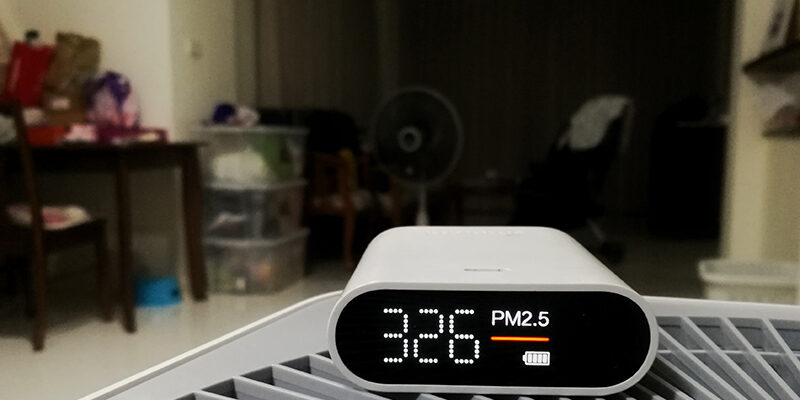Microfiber: Friend or foe?

Consumers have frustrated professional cleaners for decades when they purchase furniture that “looks and feels good,” but is difficult to maintain and to clean.
Furniture that has such pleasing aesthetics has historically been made from natural fibers, which often have a very soft hand, bright colors, and are comfortable to sit on.
These natural fibers (cotton, linen, silk, wool, as well as synthetic regenerated cellulose materials such as rayon and acetate) fill all of these needs, but are challenging to clean.
More recently, “nubuck leather” broke into the market within the last decade, but this “feel good” fabric has proven to be even more difficult to maintain than the above-mentioned textiles.
Enter microfibers
Microfibers are not new to our industry. In the late 1970s, UltrasuedeѢ was introduced as an upholstery fabric.
This polyester fiber so convincingly imitated true suede that otherwise trained and savvy cleaners turned down the opportunity to clean what they thought was a very difficult material to service, when in reality it had very few challenges.
Microfiber remained a relatively small percentage of the fabrics we cleaned until nubuck leather left its mark on the industry. Nubuck leather was widely accepted by the public for its very soft touch, but rapidly lost favor when consumers learned how difficult it was to maintain and restore.
But the marketplace proved that a “soft touch” material was what the consumer wanted.
It was at this time that microfibers exploded into the marketplace, and why cleaners are seeing so much of them today.
How do these microfibers so easily imitate the feel and appearance of suede, and provide the look and feel of natural fiber textiles?
The name says it all
Microfibers are, as the name implies, synthetic fibers that are far smaller in diameter than “typical fibers.”
As an example, they are 100 times finer than a human hair, one-third of the diameter of cotton, one-fourth the diameter of wool, and one-half the diameter of silk.
The measurement that is used for measuring such fibers is “denier.”
Silk has a denier of 1.25, and for a synthetic fiber to be deemed a “microfiber,” it has to be less than 0.9 denier.
Most microfibers used for upholstery are .4 to .5 denier.
These very fine fibers create a fabric that is light, very resilient, and relatively strong and durable.
What makes this product “feel” like a more delicate natural fiber is that it has enough “space” between the fibers to create a material that breathes and allows body heat and moisture to migrate away from the person sitting on it, thus creating the same “cool” feel that usually only comes from natural fibers.
That same characteristic also gives it an extremely appealing “soft hand.”
Cleaning challenges
Considering the strength and durability of the two dominant fibers used for microfibers (polyester and nylon), one might consider this to be an “idiot proof” fabric.
This, unfortunately, is not the case.
Like most fabrics that we clean, there is more technical skill involved than might be originally thought.
Soils, spots and stains
A polyester microfiber may adsorb more than seven times its weight in water.
This makes microfiber a great cleaning cloth, but a “spill magnet” when used for upholstery fabrics.
Microfibers will hold great volumes of dried sugary materials from spills, and may require heavy preconditioning and hot water extraction to completely remove such materials.
Polyester is also very oil loving; thus hair and body oils will take thorough preconditioning to break these oily films down so that they can be emulsified and flushed from the fabric.
To better understand the characteristics of microfibers, it’s helpful to know the difference from two similar sounding terms: ADsorbency and ABsorbency.
Absorbency is the ability of a material to absorb and retain liquid within its physical structure.
Natural fibers are highly absorbent.
Adsorbency is the retention of liquid on the surface of a material. Synthetic fibers are adsorbent.
A way to illustrate ABsorbency might be water within a bottle, and ADsorbency would be the drops of water on the outside of the bottle.
How does all of this relate to cleaning challenges in microfibers?
The nature of having so many very fine fibers within a fabric creates a vastly larger surface area that can adsorb a great deal more moisture than can conventional denier synthetic fibers.
Thus, while not absorbent like a natural fiber — such as cotton — a microfiber is so highly adsorbent that it ends up retaining large volumes of liquid spills (and cleaning solution), and thus requires more attention to suspending soils and extracting suspended soils and cleaning solution than “the usual” synthetic fiber fabrics.
Texture
Microfibers made from polyester or nylon are vastly superior to nubuck leather, as well as rayon velvets and chenilles, all of which feel soft, but have terrible problems in retaining their soft texture after moderate use and cleaning with any water-based solutions.
Nevertheless, microfibers will flatten out and become permanently distorted in heavy usage areas, and care must be taken to open available vacuum relief valves when using a truckmount to clean microfiber upholstery; otherwise, permanent wand marks could be caused by excessive vacuum, especially if the cleaning tool has sharp, angular edges and lips.
Microfibers are also heat-sensitive, and ultra-high temperatures could potentially create nap distortion, depending on the type of cleaning tool and spray nozzle being used.
To be on the safe side, keep cleaning temperatures at the machine below 200 degrees Fahrenheit.
Velvet groomers are not the best tools for grooming microfiber upholstery, as most of these tools will leave the fabric with a “raked” look.
A clean, dry terrycloth towel will reorient the nap to an acceptable level, and also absorb more moisture after extraction.
Due to the need to restore as much of the product’s soft hand as possible, microfiber fabrics should be rinsed with acidic rinse agents or clear water, rather than with extraction detergents.
Likewise, solvent-based protectors are preferable to water-based products, as water-based protectors also likely stiffen the hand of this otherwise soft fabric.
Beware of imitations
Don’t let the relatively “easy care” advantages of microfibers lull you into carelessness.
Rayon microfibers are currently being used in the garment industry.
While I have no firsthand evidence that they are being used for upholstery fabric, it is my belief that it is only a matter of time before rayon microfibers are introduced as an upholstery fabric.
A rayon microfiber fabric would need to be cleaned with very great care, and would be challenging to restore back to its original softness unless dry cleaned.
Also, be aware that nubuck leather, and the far less common suede leather, can look and feel just like synthetic microfibers.
Only a burn test will tell you for certain what you have.
An industry trainer and consultant, Jim Pemberton is president of Pemberton’s Cleaning & Restoration Supplies and West Penn Cleaning Company, McKeesport, PA. Jim is the Cleanfax magazine 2007 Person of the Year. He has more than 30 years of experience in the cleaning and restoration industry. You are invited to visit his website at www.ecleanadvisor.com, or e-mail Pemberton at [email protected].












